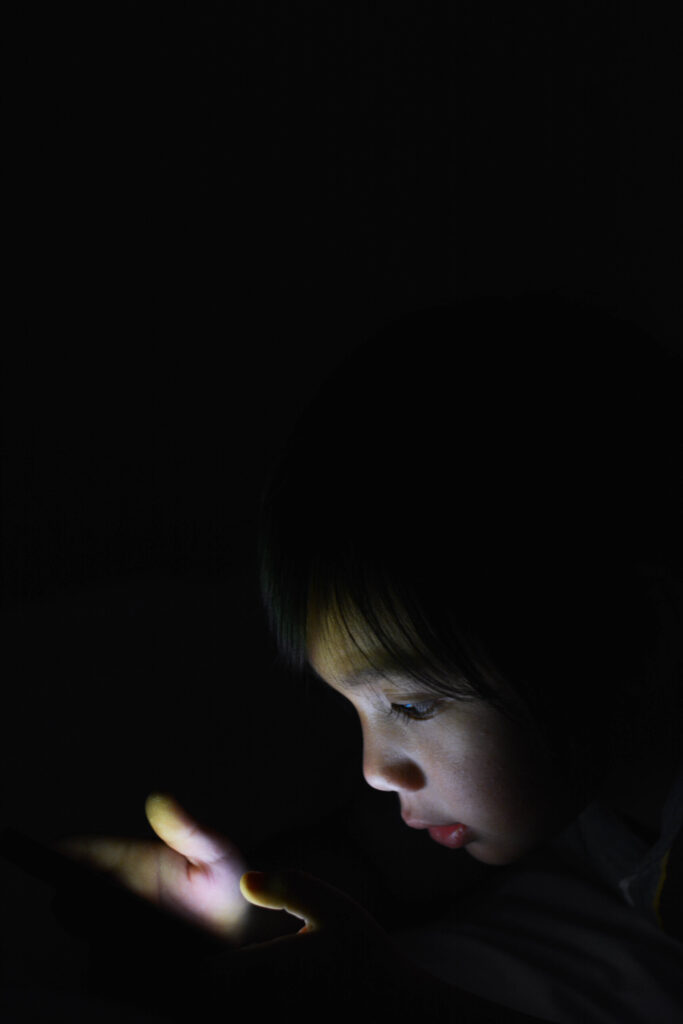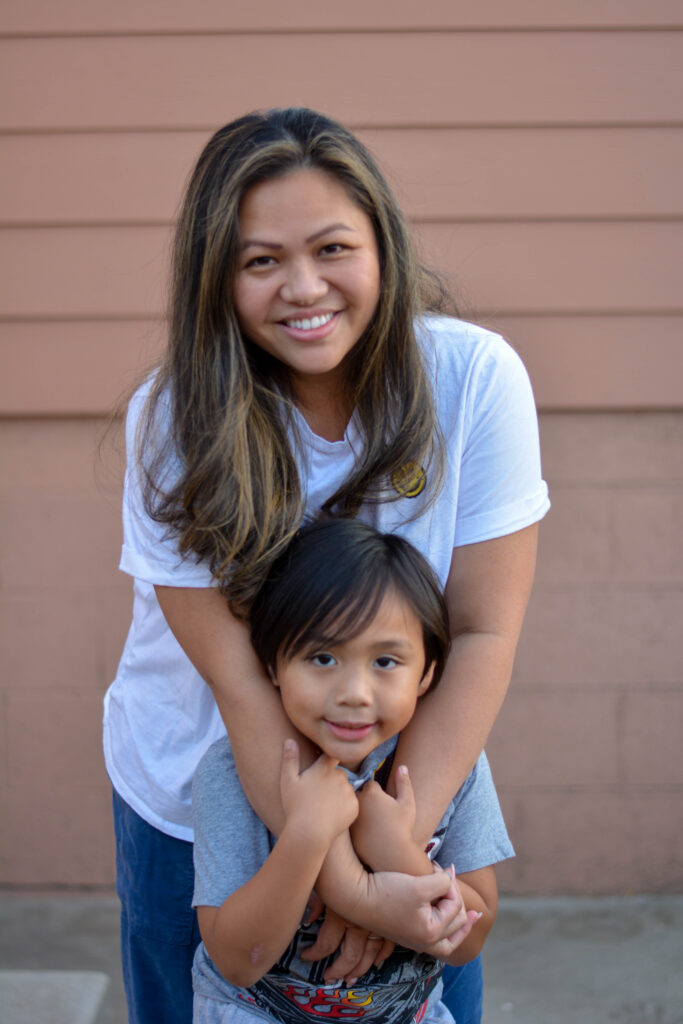
5-year-old Robbie Silos plays a mobile game on his smartphone. Photo by Peter Villafane. 
Gamer Robbie Silos with his mother Cheska Silos. Photo by Peter Villafane.
“Robbie! Robbie! Robbie! Robbie!”
“ROBBIE!”
After the fifth call, mother of two Cheska Silos finally gets the attention of her 5-year-old son.
He was distracted playing video games—eyes glued to the screen, tiny fingers clutching his smartphone or tablet. He sometimes does this for hours.
“He gets really focused on it and when you call him he doesn’t respond,” Silos said.
Although Robbie also does outdoor activities, such as shooting Nerf guns with his cousins, he is allowed to be on his phone for up to four hours, playing video games or watching YouTube.
Aside from his phone or tablet, Robbie also plays computer games. He plays Plants vs. Zombies, Fortnite, Call of Duty and Roblox, which he plays the most.
In the 1960s, psychologist Albert Bandura conducted the Bobo doll experiment, seeing how 72 children, ages three to six, reacted to witnessing violent behavior.
Adults performed aggressive acts toward a toy called the “Bobo doll” to one-third of the children. Another third were shown neutral acts toward the doll, and the last third was the control group. The researchers then observed what the children did to the doll after what they saw.
Those who were shown the aggressive acts tended to imitate what they saw. Bandura concluded that this supported his social learning theory. The children learned aggression by watching it from others.
According to Brandon Shindo, a licensed clinical social worker and psychotherapist, video games may have a high impact on players’ behavior.
Shindo explained that when some children play video games something in their brain triggers them to want to win all the time and when they lose they act out in aggressive and violent ways.
“Sometimes when you are playing video games, you get pretty tense,” Shindo said. “If you are trying to run away from somebody or trying to shoot somebody, these kinds of things can activate certain behaviors inside of you, so it’s a combination of real nature and nurtures together.”
Shindo said video games can also be used as a coping mechanism.
“If youth are really stressed out, it can be a healthy way of taking a break, whether it’s school or work,” Shindo said. “It can shift them to something else.”
While video games can be a healthy distraction, Shindo said players should not overdo it.
“Anything in terms of video games where there is excess, it becomes an issue,” Shindo said. “When it’s done in moderation, it can be used in a positive way.”
According to research done by Sibylle Georgianna, a clinical psychologist, video games can be addictive.
“The human brain is wired to crave instant gratification, fast pace and unpredictability,” Georgianna wrote in an email. “All three are satisfied in video games.”
Silos noticed that video games can become an obsession.
“I think they are really addicting because they get really into it,” Silos said. “I mean, I get addicted to it. Imagine a 5-year-old. Of course he is going to get addicted to it, too.”
With many children staying home during the pandemic, they may be spending more time on screens and on video games.
David Greenfield, founder of The Center for Internet and Technology Addiction and assistant clinical professor of psychiatry, said in an article in Brain & Life Magazine that taking a video game away from an “addicted adolescent” can lead to behavioral problems, withdrawal symptoms and even aggression.
Silos found that these effects were true for her son.
“We did delete some of his games, but he acted irritated and he threw a tantrum,” Silos said. “But we made him understand.”
Some enticing factors in modern computer games are earning items such as skins, costumes, upgrades and new characters. Players can get these items from playing multiple levels or by purchasing them.
For younger players such as Robbie, they may be able to purchase them through money from their family.
“My aunt would give him money, my sister would give him money for Fortnite skins,” Silos said. “I did give him some V-bucks, so he spent $200 already—a lot of bribing. His grandma just gave him $50 of V-bucks for the whole week if he didn’t fight with his brother, so she gave him $50 and I think I gave him another 50 for a reward.”
Shindo believes that young people should have someone to talk to without feeling judged or made to feel bad.
“I think there is that stigma of mental health services and so maybe it’s not actually going to therapy but having people that young youth can go to and confide in if it’s a mentor or somebody at a church or a religious institute or even a teacher,” Shindo said.
Shindo said that as a society there needs to be a focus on monitoring young people in terms of when things happen in their lives, they feel comfortable to confide in someone.
“If it’s all kept inside and repressed, it’s going to come out one form or another oftentimes. Those types of stigmas need to change in society as a whole and I think teachers, professors and professionals on that level need to advocate this start to change,” Shindo said.



